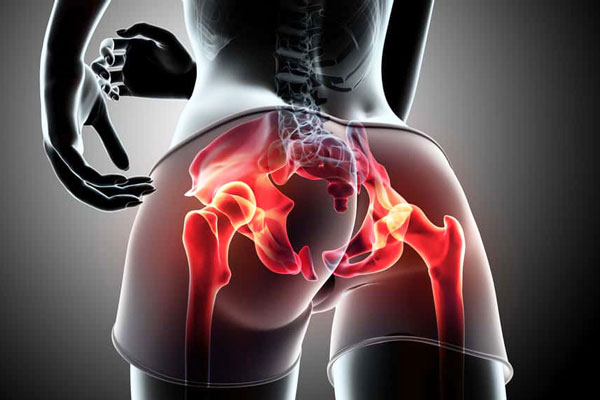Snapping Hip Syndrome
Some people experience a feeling as though their hip is dislocating, sliding out of place, or making a clicking sound while walking or getting up from a chair. This hip problem is known as snapping hip syndrome.
What is snapping hip syndrome?
Snapping hip syndrome is a hip problem, and as the name suggests, the condition is characterized by a snapping sensation (click noise) in your hip when you move it. Medically, it is referred to as coxa saltans. This sensation usually occurs when the muscle and tendon (fibrous connective tissue connecting muscles to bones) cross over a bony projection in your hip.

The syndrome is usually free from pain and harmless, but in certain cases, it can lead to swelling in the bursa (a tiny fluid sac in the hip that reduces friction in the joints), which leads to inflammation; the condition is called bursitis.
There are three main types of snapping hip syndrome based on its origin:
- External snapping hip (most common): In this type, the tendon or muscle will slide over the hip bone at the top (lateral side) of your thigh bone (femur). Here, the pain is felt more on the lateral side, and the patients may experience dislocation of the hip while running, sitting, or doing other simple activities.
- Internal snapping hip: This type occurs when your tendons or muscles slide over bone structures at the edge of the acetabulum (the socket of the hip bone). It is characterized by anterior (front side) hip pain or groin pain. You may feel like the hip is popping during hurdles, jumping, and cycling motions.
- Intra-articular snapping hip (least common): Unlike external or internal snapping hips, intra-articular snapping hips aren't caused by a tendon or muscle; instead, they are caused by an actual hip joint issue or some injury. The condition may also result in "hip lockup".
What are the causes and risk factors of snapping hip syndrome?
Snapping hip syndrome happens as a result of tightness in the muscles and tendons that support your hip. The sensation occurs when these tight tissues cross over a bony ridge in your hip.
The risk is higher for those who are actively involved in sports and activities that require repeated bending at the hip, like dancers. Young athletes are more likely to have a snapping hip, as muscle tightness in the hip is common during the adolescent period.
What signs and symptoms might youexperience with snapping hip syndrome?
An audible snapping or clicking sound while flexing your hip is the most common symptom. Other symptoms of snapping hip syndrome may include:
- Mild pain
- Hip tightness, usually in the front or the rear
- Swelling in the hip
- Weakness in the leg
- Difficulty in doing regular physical activities
How is snapping hip syndrome diagnosed?
To diagnose your condition, your physician will closely examine your medical history, evaluate your symptoms, and conduct a physical examination to find out the exact source of the pain. This will be followed by some imaging tests, such as X-rays or an MRI scan, to confirm his diagnosis.
What options are there for snapping hip syndrome treatment?
The best treatment for snapping hip syndrome is to give the tendon proper rest and allow it to heal naturally. Your doctor may recommend some conservative home remedies to reduce the discomfort, which include:
- Reducing your activity levels
- Applying ice to the affected area.
- Using non-steroidal anti-inflammatory drugs, such as aspirin or ibuprofen.
Depending on the cause and severity of your snapping hip, other treatment options may be used. Some stretches or strengthening exercises may be suggested for moderate conditions. If your condition does not get better or is getting worse, your doctor may recommend corticosteroid injections (to reduce painful inflammation of the bursa) or even surgery.
How can one prevent snapping hip syndrome?
The ailment known as "snapping hip" cannot be avoided. One can reduce the risk by maintaining good flexibility and strength in the hip and pelvis by stretching the muscles and tendons regularly.